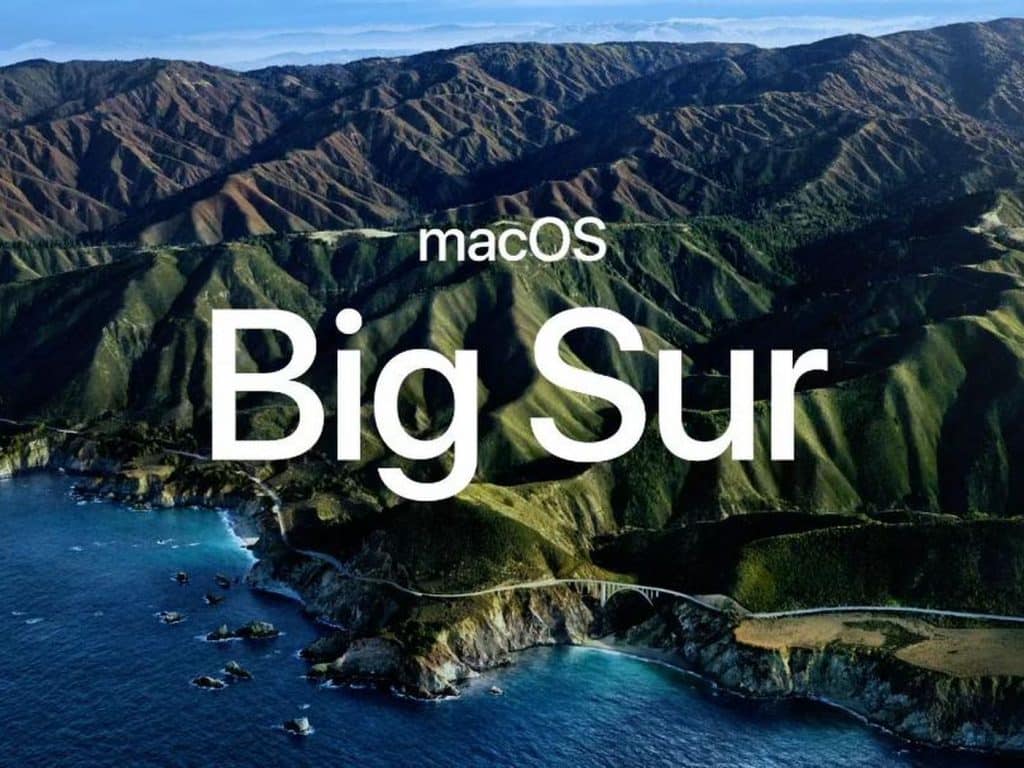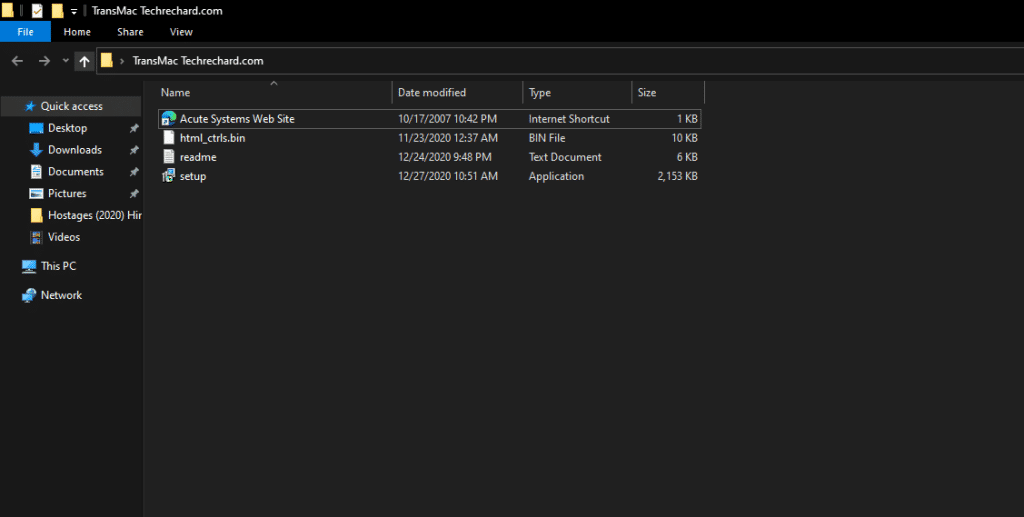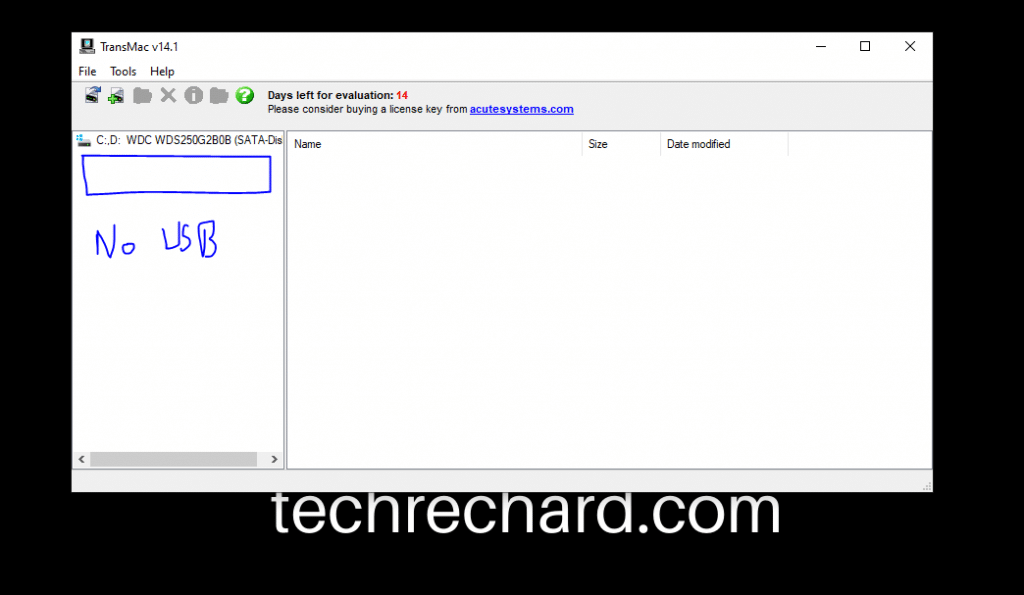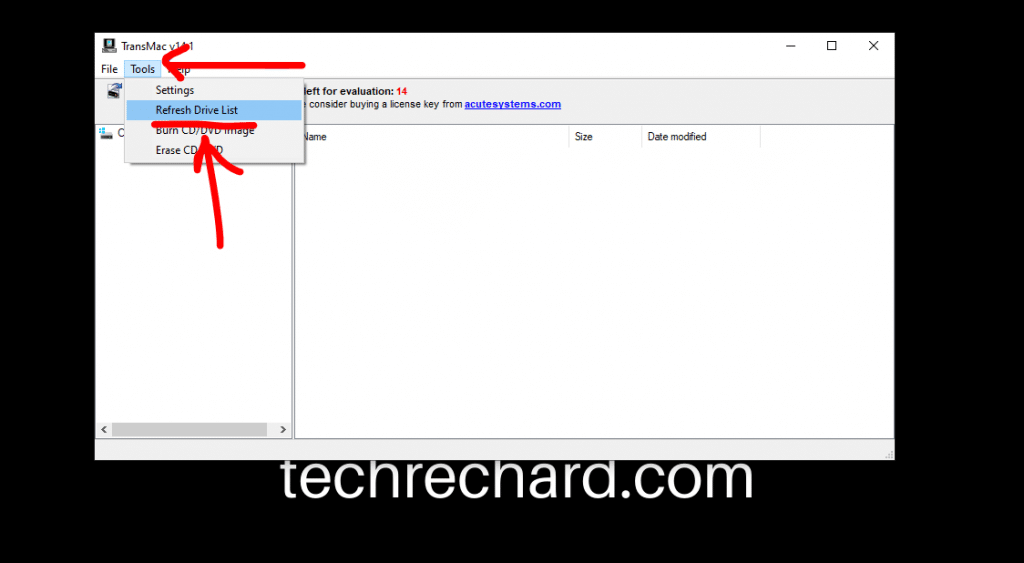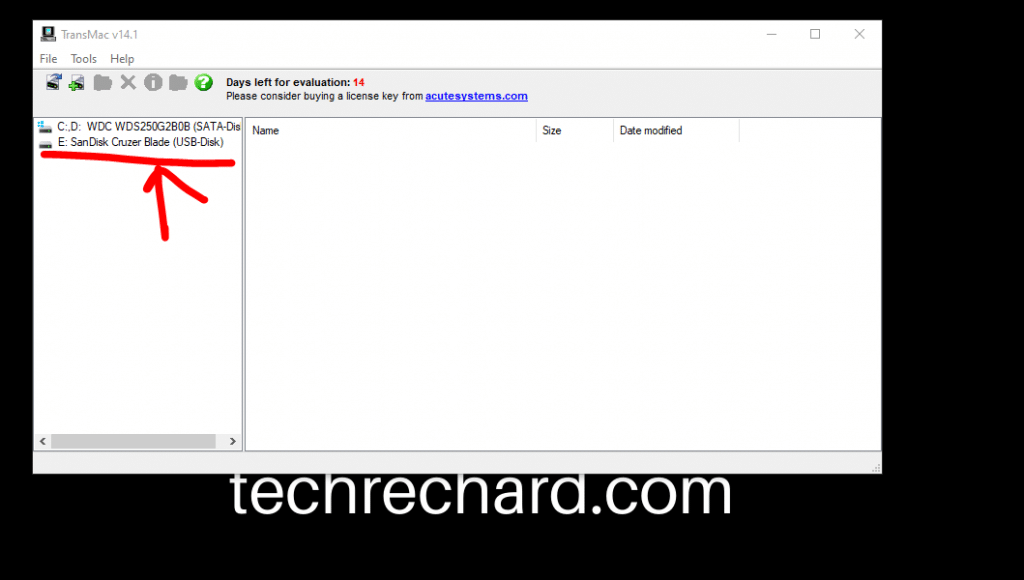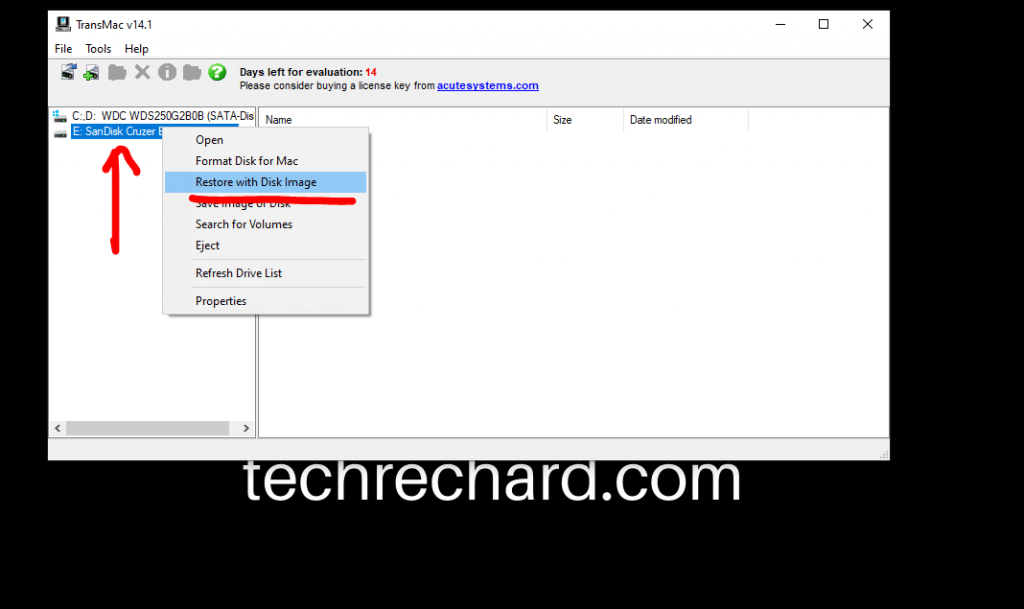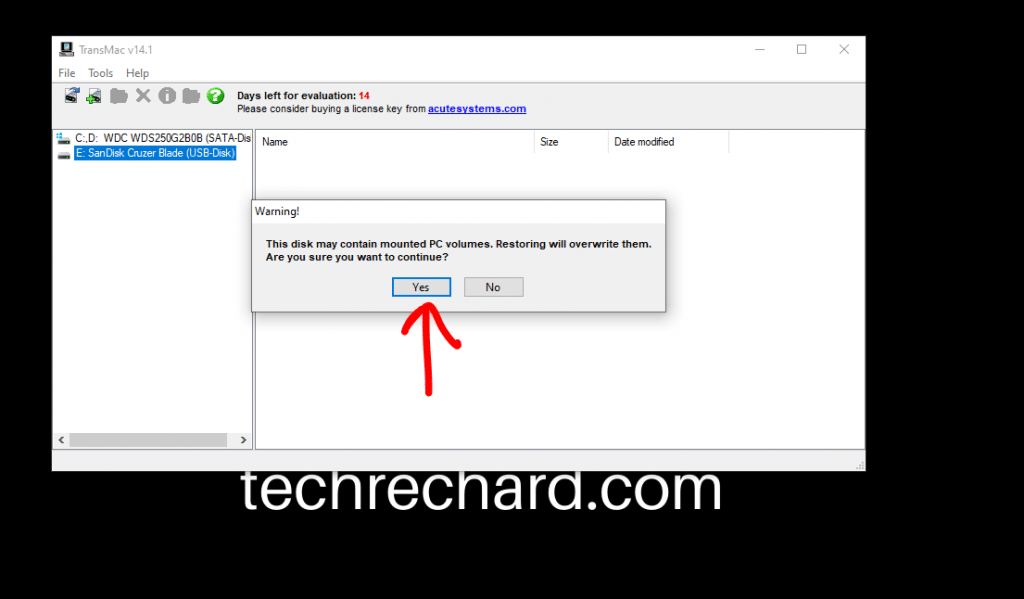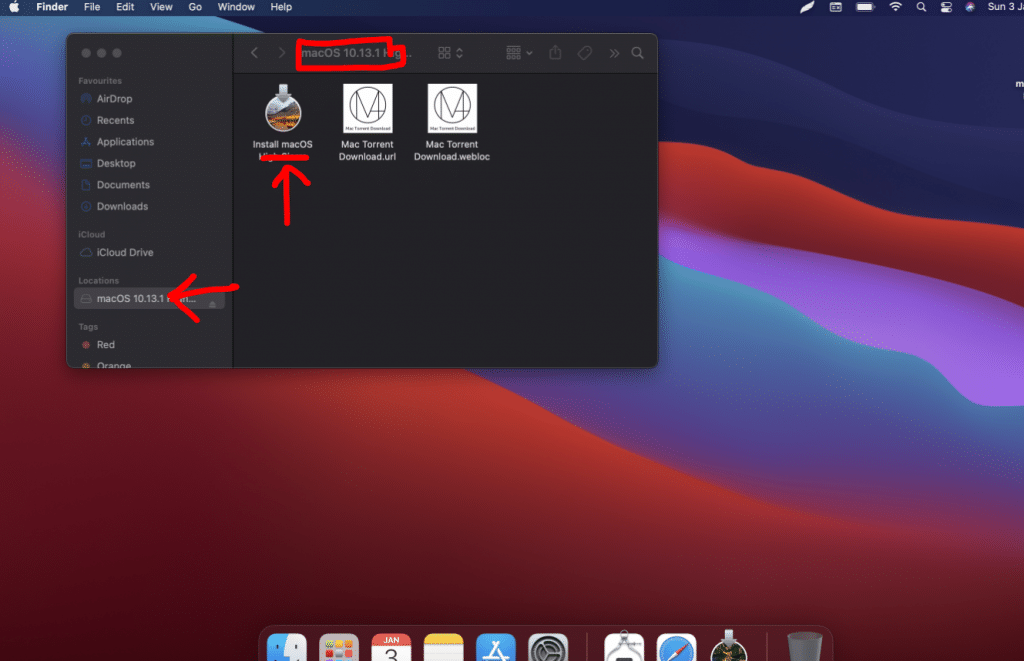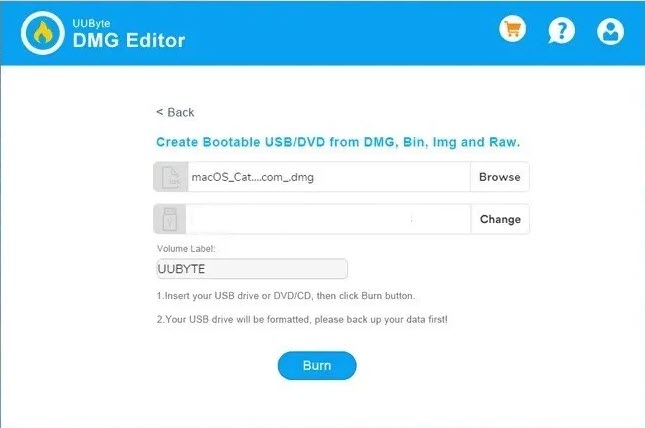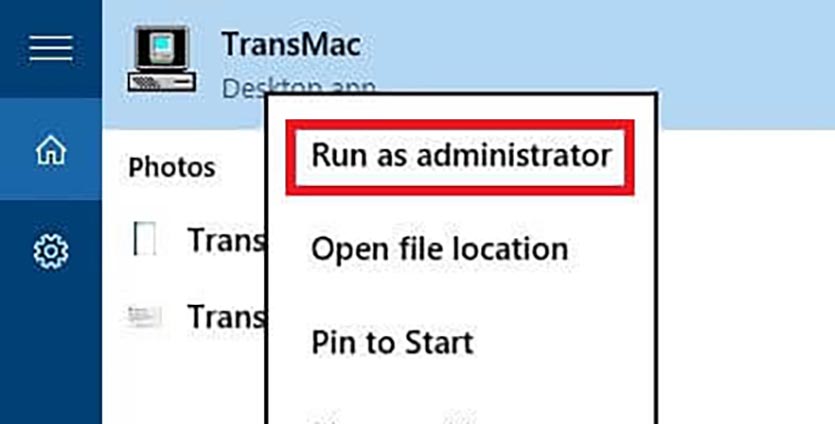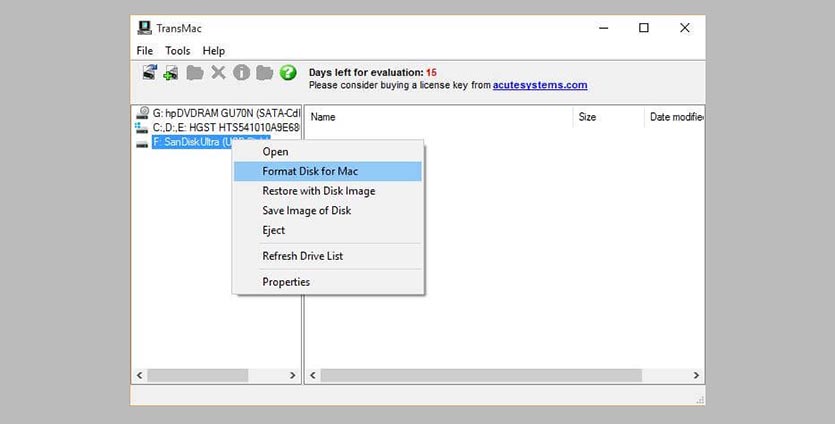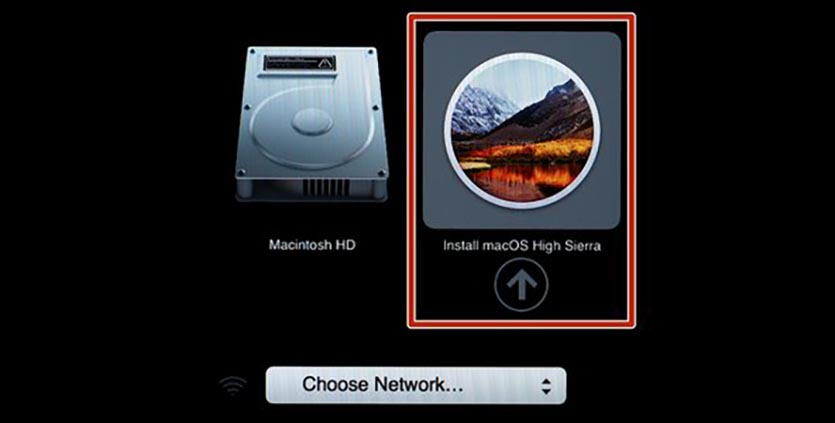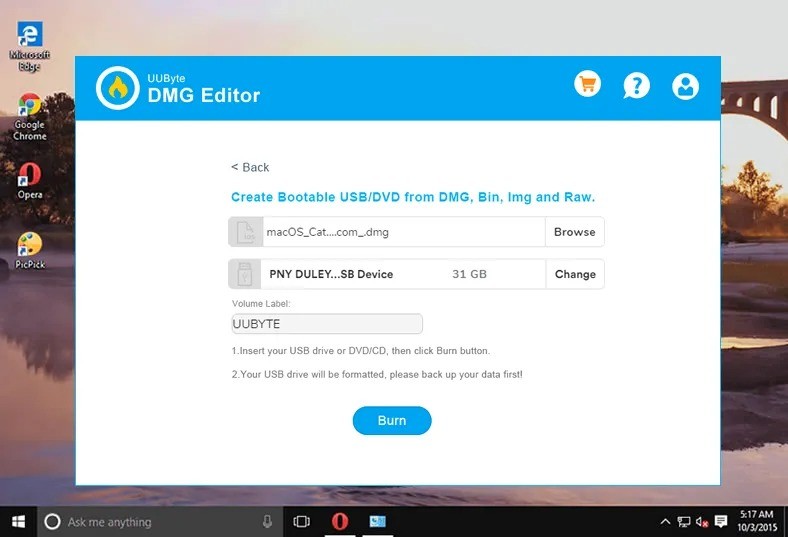Уровень сложности
Простой
Время на прочтение
3 мин
Количество просмотров 3.6K
Описываю свой рабочий опыт установки macOS на старенький macbook, так как другие способы описанные в интернете не дали результатов, либо привели к новым ошибкам.
Для начала скачиваем дистрибутив в формате *.dmg. Сделать это можно из App Store со второго macbook, либо с торрент (важно чтобы это была чистая копия из App Store).
Берем флешку на 8Гб и более, вставляем в компьютер с Windows, нажимаем Win+R, пишем cmd.
Запускается консоль и в ней уже пишем diskpart потом list disk, на экран выводиться список дисков windows, теперь важно не перепутать диски и выбрать именно диск с флешкой. Пишем select disk (номер флешки):
Теперь нам нужно преобразовать загрузочную область в формат GPT, набираем по очереди команды:
clean, convert GPT, create partition primary, exit.
C сайта https://www.acutesystems.com/ скачиваем программу TransMac, она платная, но работает 15 дней которых должно хватить. Запускаем, выбираем наш флеш накопитель, сначала выбираем пункт Format Disk fo Mac. И после завершения процесса выбираем Restore with Disk Image где нам нужно будет указать наш дистрибутив с macOS в формате *.dmg.
Все флешка готова, но загрузиться с нее не выйдет. Если загрузить мак удерживая клавишу alt, слоты загрузки будут пустые. Поэтому загружаем Recovery system удерживая клавиши cmd+R (нажимать нужно сразу после кнопки включения до появления яблока или земного шара).
Тут нам понадобиться дисковая утилита, запускаем ее, смотрим что флешка определилась и далее нам нужно отформатировать основной диск (Тут я подразумеваю что все ваши нужные файлы лежат в облаке, важных файлов на самом маке нет, так как после форматирования все файлы будут УТЕРЯНЫ).
Нажимаем в меню пункт вид-показывать все устройства. Выбираем APPLE SSD, нажимаем кнопку стереть. Вводим имя, Mac OS Extended, Схема разделов GUID.
Ну а теперь можно и загрузочную флешку сделать. Выходим из дисковой утилиты и в меню выбираем пункт Утилиты-Терминал. Пишем команду def. -h и смотрим что в файловой системе есть флеш накопитель с названием который был в дисковой утилите (у меня это /Volumes/Install macOS Mojave) после этого копируем дистрибутив на жесткий диск командой
cp -R "/Volumes/Install macOS Mojave/Install macOS Mojave.app" "/Volumes/Macintosh HD"
После копирования закрываем терминал cmd+Q. Выбираем флешку и форматируем также как форматировали жесткий диск (Имя: USB, Mac OS Extended, Схема разделов GUID.).
Теперь запускаем терминал и создаем загрузочный образ:
"/Volumes/Macintosh HD/Install macOS Mojave.app/Contents/Resources/createinstallmedia" --volume /Volumes/USB
Соглашаемся, вводим y и возможно потребуется пароль от системы.
Теперь можно перезагрузить мак с зажатой клавишей alt и в пункте загрузки мы увидим картинку Install macOS Mojave. Теперь можно нажать пункт Установить macOS.
Если в процессе установки вылетела ошибка “Экземпляр программы установка macOS Mojave поврежден и не может быть использован.”
Нужно найти в интернете дату выпуска дистрибутива, отключить WiFi, запустить терминал ввести команду установки даты date: месяц-число-время-год в формате ммддччммгггг
Например, 12 декабря 10:00 2017 будет выглядеть так:
date 120110002017
Если не помогло, перезагружаем, отключаем интернет, ставим дату и после этого только запускаем установку.
После этого устанавливаем mac OS как обычно.
P.S.1: Чтобы восстановить флешку для пользования под Windows скачиваем программу SD Memory Card Formatter for Windows с сайта https://www.sdcard.org/ так как в проводнике вряд ли получиться отформатировать.
P.S.2: У других дистрибутивов названия путей будут другие, так что смотрите по возможности название папок например командой ls в терминале.
парпар
Table of Contents
In our previous post, we shared an easy method to How To Create macOS Catalina Bootable USB on Windows: 4 Easy Steps (+Video Tutorial). We also shared a method on How to Create a Bootable Disk of MacOS X: 2 Easy Steps using a MAC system. Today, we will dive into a much deeper method on How To Create macOS Big Sur Bootable USB on Windows!
macOS 11 Big Sur has just been released. The update brings several important improvements to the operating system relative to the best Macs while offering additional stability.
You can also read: How to Speed Up macOS Big Sur? 7 Easy Methods
We also noted a change in the appearance of native macOS applications. Apple introduced the changes with Messages, Mail, Photos, Calendar, and even Finder, all in a new, much more compact, optimized design. We’ll also finally get improvements that are more in line with iOS updates with macOS Big Sur, including the widget feature that came with iOS 14 and iPad 14, which makes the entire Apple product experience more harmonious and solid.
macOS 11 Big Sur: System Requirements
If you want to download and install macOS 11, you’ll have to make sure your Mac can run it. And unfortunately, the system requirements of macOS have grown with the update. We went ahead and listed the Big Sur-compatible Macs below.
- Apple MacBook 12 (2015 and newer);
- Apple MacBook Air (2013 and newer);
- Apple MacBook Pro (2013 and newer);
- Apple Mac Mini (2014 and newer);
- Apple iMac (2014 and newer);
- Apple iMac Pro (all models);
- Apple Mac Pro (2013 and newer);
macOS 11 Big Sur: Features
Safari
Safari is an underrated macOS hero. The improvements that come with the new update make the browser faster – now, according to Apple, it’s 50% faster than Chrome – along with simultaneously improved privacy and optimized energy consumption. But that’s not all. Presumably, this is the most significant update Apple has received since its first release.
The new version of Safari promises a host of new features, including intelligent tracking that provides you with a privacy report for every site you visit, saves passwords from tracking them for hacking attempts, supports extensions for WebExtensions API, and gets a selection of new extensions in the App Store, along with a built-in translation feature.
There’s one interesting feature here: the browser homepage has become highly customizable, so you’ll be able to change the background image and add/edit sections.
Messages
This service’s capabilities have been inferior to their iOS analog for some time, but now you’ll be able to use Pinned Messages, Notes, and Updated Groups that will come with iOS 14, which is nice. Basically, all updates share the iOS 14 features, which is nice to see. The update will also offer a better search, a redesigned sample of photos, and new effects in messages.
AirPods Update
Besides the exciting support for Spatial Audio for AirPods Pro, we expect significant improvements in AirPods support in macOS. Instead of messing with Bluetooth settings, whenever you want to use headphones with your Mac, they automatically switch to a Mac when you start using your computer. AirPods will now easily and intuitively switch between devices without any additional action.
Sidebar in Mail and Photos
Apple Mail and Photos apps are long out of date, so Apple has introduced a new design for most of its apps, among which the new sidebars in Mail and Photos are the most visible. The Photos app will look the same as the iOS 14 version.
MAC Control Center
One of the best things about iOS is the very convenient Control Center, which allows you to change many settings on the go. macOS Big Sur will transfer this functionality to Macs, providing easy access to them from the menu, so you can easily change the most popular settings without going to a separate Settings app.
Widgets in Notification
As with iOS 14, macOS 10.16 Big Sur has widgets for the notification menu, making it easier to access important information with a user-friendly interface. These widgets can be customized to suit your needs and preferences.
MAC Catalyst
An essential addition to macOS Mojave has been integrating some popular iOS apps. But with Mac Catalyst, new APIs and tools for app developers promise to move even more iOS apps into the Mac operating system. With these tools, you get features such as changing window size, and keyboard tools that allow you to transform your app into a Mac environment, breaking away from the problems of ported apps with the iPhone.
Create macOS Big Sur Bootable USB on Windows: Required Files
- macOS Big Sur DMG file for a clean installation. (Download links have been provided below)
- The DMG file is around 12 GB, so you need a good internet connection to download the macOS Big Sur DMG file. So, here is a tool that you can use to speed up the download process. Internet Download Manager tool that will help you enhance your downloading speed. You can download the full version below.
- A USB Drive (Pen-Drive or External Disk). Your USB device must be of sufficient memory for the installation.
- TransMac tool from Acute Systems. This Windows application tool may replicate and manage folders and files around Apple drives and apparatus, such as Mac-formatted hard drives, flash drives, and other memory devices, to open and burn disk imaged .dmg along with .sparseimage documents.
How To Create macOS Big Sur Bootable USB on Windows: Step by Step
This is a 4 step simple process. I have also shared a complete video tutorial on How To Create macOS Big Sur Bootable USB on Windows, you can find the video at the end of this post.
NOTE: Kindly do not skip any step; the process will fail, and you might corrupt your USB device. I crashed mine once!
Step 1: Downloading necessary files to Create macOS Big Sur Bootable USB on Windows
- macOS Big Sur DMG by techrechard (Google Drive + MediaFire)
- TransMac tool from Acute Systems- This file is password-protected, and the password is www.techrechard.com. You can extract this file using WinRAR download free and support: WinRAR (win-rar.com).
- IDM 6.27 Build 2 Registered (32bit + 64bit Patch) [Techrechard.com] – This file is password-protected, and the password is www.techrechard.com. You can extract this file using WinRAR download free and support: WinRAR (win-rar.com).
Step 2: Install TransMac Tool on your Windows
After downloading the TransMac tool from the above links, proceed with the installation. The process is very similar to installing any other tool on your Windows. Once you have downloaded and extracted the contents from the RAR file, you will see the following contents:
Open the TransMac Techrechard.com folder, and click SETUP.
And click, Next.
Accept the terms and conditions.
Choose the directory for installation. You can keep it default.
Leave the default ticks and click Next.
And you see that within no time the setup is complete.
Step 3: Open TransMac Tool
Once the installation is over, the transmac tool will open itself. And you will see the following message.
Since we are running the trial version of TransMac, you need to wait for 10 seconds, and it will open up automatically. After 10 seconds, you can click, Run.
Now insert your pendrive, usb drive or any external disk.
And click Tools, followed by Refresh drive list.
Once you click refresh drive list, you will see your USD device attached.
Step 4: Complete the installation
Now, right click your USB and click Restore with Disk Image.
Now, you will be prompted an error that you need to run TransMac using administrator access. So you simply click YES.
Now, wait again for 10 seconds.
Now, right-click on your USB device and click Restore from Disk Image again. You will be prompted with a warning, and you can click Yes.
Now you select the Big Sur DMG file that you have downloaded and upload it.
Now click OK,
Now you will get your last warning that the USD device will be formatted. You can click YES.
The restoration process will begin, and it will take around 20-30 minutes, depending upon your USB device’s speed. For me, it took around 17 minutes.
Once complete, you will see the following snapshot.
Now the Restore process is complete, and you can use this USB as macOS Big Sur Bootable USB. To check the contents of this USB, you will need a MAC system. If you do not have a spare MAC, no need to worry. I will show you the contents of this USB created.
NOTE: This USB will not work on Windows anymore. If you plug it again on your desktop, it will ask you to format the drive. So do not worry. The contents of this USB will be visible only on a MAC system.
As you can see the contents of the USB device. Now, you can use this as a macOS Big Sur Bootable USB.
After this process is complete, you can use this USB to install macOS Big Sur on your MAC system using the BIOS mode. You simply need to boot your MAC using this USB device at startup.
Here are some other posts that you might be interested in-
How to Fix macOS Big Sur Screen Resolution on VirtualBox: 5 Step Guide
How to Install macOS Big Sur on VMware on Windows? 8 Step Guide
How to Install macOS Big Sur on VirtualBox on Windows? 8 Step Guide
How to Create macOS Big Sur Bootable Installer for Clean Installation: 2 Easy Steps
Download macOS Big Sur DMG File 11.1 {Updated 4 Jan 2020}
Download macOS Big Sur VMDK (Virtual Machine Disk) File
Download macOS Big Sur VMware & VirtualBox Image – Latest Version
How To Create macOS Big Sur Bootable USB on Windows: Final Words
I hope you have enjoyed this article and have successfully created macOS Big Sur Bootable USB on Windows. If you find any issues, you can leave your comments below. I have also created a complete video tutorial that you use and learn How To Create macOS Big Sur Bootable USB on Windows below.
Если вы хотите установить на свой Mac компьютер последнюю операционную систему macOS Big Sur или более новую, но не знаете, как сделать это непосредственно, то загрузочный диск — ваш помощник. В этой статье я расскажу вам о трех простых методах создания загрузочной USB-флешки на Windows PC, которые помогут вам полностью установить операционную систему на ваш Mac. Как у любой операционной системы, у macOS Big Sur есть свои функции и возможности, которые каждый хочет попробовать в повседневной работе. Поэтому непросто непосредственно установить macOS Big Sur на компьютер. Но с помощью загрузочной USB-флешки вы можете полностью установить macOS Big Sur на свой компьютер Mac.
Если ваша операционная система повреждена и вы не можете переустановить ее, то эта статья поможет вам создать загрузочный диск macOS Big Sur на компьютере под управлением Windows. Однако все еще много людей, которые не знают точную процедуру создания загрузочной флешки. Для этого нужен файл DMG macOS Big Sur и сторонние программы для создания загрузочной флешки.
В этой статье я покажу три простых метода создания загрузочной флешки с MacOS. Просто выберите один из этих методов и следуйте инструкциям. Решение за вами!
Как создать загрузочный USB-накопитель macOS 11 Big Sur с помощью редактора DMG UUByte
Шаг 1. Сначала необходимо загрузить и установить редактор DMG UUByte на свой ноутбук или компьютер.
Шаг 2. Затем подключите свой USB-накопитель или DVD-диск к компьютеру или ноутбуку.
Шаг 3. Запустите приложение, а затем нажмите на кнопку Burn.
Шаг 4. Выберите файл DMG macOS Big Sur, нажав на опцию Browser.
Шаг 5. Когда вы выберете файл DMG macOS Big Sur, выберите имя USB-накопителя или DVD, а затем нажмите на кнопку Burn.
Шаг 6. Дождитесь окончания процесса в течение 10 минут, после чего ваш загрузочный USB-накопитель будет готов.
Создание загрузочного USB-накопителя macOS 11 Big Sur — это быстрый и простой процесс с использованием редактора DMG UUByte. Следуйте этим простым шагам и вы сможете легко создать загрузочный USB-накопитель для установки новой операционной системы macOS на свой компьютер.»
Как установить TransMac на вашем ПК с Windows
Шаг 1. Перейдите в папку, где вы загрузили файл программы TransMac.
Шаг 2. Когда вы находите файл TransMac, дважды щелкните по нему.
Шаг 3. Когда вы дважды щелкаете по файлу, вы попадаете на страницу TransMac.
Шаг 4. В этом шаге я рекомендую вам прочитать информацию, прежде чем продолжить, затем отметьте «Я принимаю условия лицензионного соглашения» и нажмите на кнопку Далее.
Шаг 5. На этом шаге мы собираемся установить приложение, выберите место, куда хотите установить его, а затем нажмите кнопку Далее.
Шаг 6. Теперь снова нажмите на кнопку Далее.
Шаг 7. Наконец, нажмите на кнопку Установить, чтобы установить на свой компьютер.
Шаг 8. Когда установка закончена, нажмите на кнопку Готово.
Откройте TransMac Administrator
Когда вы успешно установили TransMac, подключите USB-накопитель, который вы собираетесь использовать для создания загрузочного USB-накопителя macOS 11. Затем откройте приложение TransMac от имени администратора и следуйте указанным ниже шагам.
Шаг 1. Щелкните правой кнопкой мыши на своем USB-накопителе с левой стороны экрана. После этого щелкните на опции «Восстановление образа диска».
Шаг 2. Нажмите на кнопку ОК.
Шаг 3. Теперь выберите файл DMG macOS 11 Big Sur, нажав на опцию «Три точки», затем нажмите на кнопку ОК.
Шаг 4. Нажмите на кнопку Да.
Шаг 5. Когда вы нажимаете на кнопку «Да», нужно немного подождать, пока загрузочный USB-накопитель будет создан.
Заключение
Это было все о том, как создать загрузочный USB-накопитель macOS Big Sur на компьютере с Windows. Если вы хотите создать загрузочный USB-накопитель для macOS Big Sur, я готов вам помочь. Я надеюсь, что после прочтения этой статьи вы получили полезную информацию о создании загрузочного USB-накопителя macOS Big Sur. Если у вас возникли какие-либо проблемы при выполнении шагов, не стесняйтесь оставлять комментарии внизу.»
Когда компьютер Mac внезапно перестал запускаться, а резервной копии macOS под рукой нет, поможет чистая переустановка системы.
Если рядом есть другой Mac, то проблем с созданием загрузочной флешки не возникнет. Сейчас расскажем, как выкрутиться из ситуации с Windows-ПК.
? Спасибо re:Store за полезную информацию. ?
Как создать загрузочную флешку в Windows
1. Для создания флешки скачиваем приложение TransMac.
Утилита распространяете на сайте разработчика по цене $59. К счастью, есть бесплатный 15-дневный триал.
2. Теперь потребуется найти образ для установки macOS.
Официального способа скачать операционную систему из Windows нет. Придется либо искать друга с компьютером Mac, либо пользоваться известными всем сайтами.
Обратите внимание, что для работы утилиты TransMac нужен образ macOS в формате *.dmg
Если удастся найти друга с яблочным компьютером и скачать macOS из Mac App Store, будет проще у него же и сделать нагрузочную флешку по инструкции.
3. Когда образ скачан, а утилита установлена, запускаем TransMac от имени Администратора и соглашаемся на триальный период использования программы.
4. Подключаем к компьютеру флешку (понадобится накопитель емкостью 8ГБ и более)
5. В боковом меню находим подключенный накопитель и через контекстное меню форматируем командой Format Disk for Mac.
Внимание! Данный процесс является необратимым, все данные с флешки будут удалены.
6. После окончания форматирования снова вызываем контекстное меню диска и выбираем пункт Restore with Disk Image.
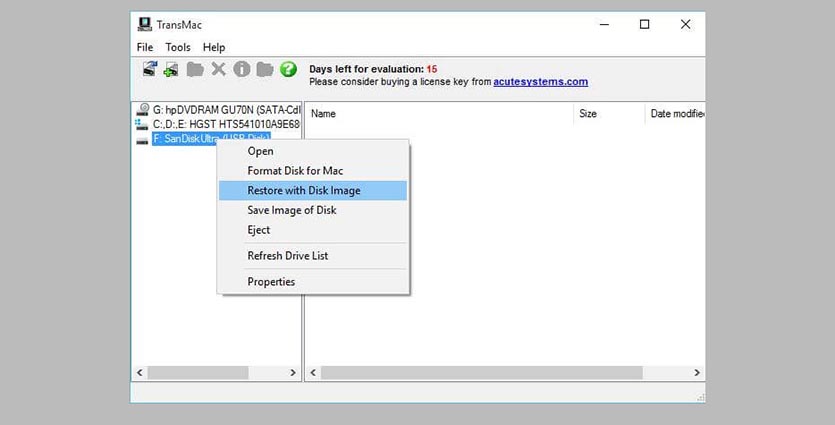
7. В открывшемся окне проводника указываем скачанный образ для установки macOS.
8. Подтверждаем запись образа на флешку и ждем 20-30 минут, пока процесс не завершится.
Все! Флешка для установки macOS готова.
Как запустить Mac с флешки
Подключаем наш накопитель к компьютеру Mac и включаем его с зажатой клавишей Alt (Option).
Обратите внимание, что для загрузки со внешних накопителей на Mac с чипом T2 нужно произвести некоторые манипуляции.
В меню выбора диска указываем флешку и производим установку macOS.
Следуйте подсказкам мастера установки и через несколько минут получите работоспособный Mac.

🤓 Хочешь больше? Подпишись на наш Telegram.

iPhones.ru
Это может пригодиться каждому, когда нет второго Mac под рукой.
- macOS,
- restore,
- windows,
- инструкции,
- фишки
Артём Суровцев
@artyomsurovtsev
Люблю технологии и все, что с ними связано. Верю, что величайшие открытия человечества еще впереди!
The main reason to create macOS 11 Big Sur Bootable USB on Windows is to have a clean installation of macOS Big Sur on virtual machines. With bootable USB you can install macOS Big Sur on VirtualBox and Vmware. Even, you will have a full installation on Mac compatible computers. However, if the virtual machines or Macbook and Mac has crushed and don’t reboot normally as it should.
The reason to not reboot macOS Big Sur can be from file corruption, buggy update, hardware failure, or malware. Then, with a macOS 11 Big Sur bootable installer you can easily install the latest operating system.
On Mac computers, you can easily create a USB installer for macOS Big Sur using Terminal and some commands line. But, doing it on Windows is somehow difficult and you have to create it using third-party software. Therefore, we will create a macOS 11 Big Sur USB installer using UUByte DMG Editor and TransMac software.
- How to Install macOS Big Sur on Virtualbox on Windows
- How to Install macOS Big Sur on Vmware on Windows
However, the macOS 11 Big Sur developer beta version is available and the public beta will be released in July. Remember, with this method, you can create any version of the macOS Big Sur installer. Whether, it is developer beta, Public beta, or final release version.
MacOS 11 Big Sur Compatible devices
Before moving on the macOS 11 Big Sur compatible Macs list. Let’s have a short glimpse of macOS 11 Big Sur introduction. However, Apple Inc. announced and released macOS 11 Big Sur the latest Macintosh operating system. Meanwhile, Apple released the first developer beta for developer users to check the new operating system bugs, features, and improvements.
The macOS 11 Big Sur has major new features with new user interface design and iOS14 and iPadOS 14 supports. The refreshed design to macOS Big Sur, Control center for Wifi and Bluetooth connectivity, Notification center, support for Apple-designed ARM processor, Support for iOS and iPadOS apps, Signed system volume, Software updates, Spotlight, Improvements to Safari, Messages, App Store, Notes, Photos, Maps, and New apps introduced in Mac Catalyst.
When Apple introduced the next Mac operating system and tweeted ‘the older Mac computer 2012 and 2013 will not get macOS Big Sur updates’. So, the older Mac has dropped from the compatible list and it can’t support macOS Big Sur. However, you can install macOS Big Sur on Unsupported Mac devices. and you can download and install macOS Big Sur on your Mac.
So, the below lists can support macOS 11 Big Sur and they will get the new updates and can install macOS 11. Therefore, if you have the below Mac computer then you can get macOS 11 experience by creating macOS 11 Big Sur bootable USB.
- MacBook 2015 and later
- MacBook Air and Pro Late 2013 and later
- Mac mini 2014 and later
- iMac 2014 and later
- iMac Pro 2017 and later (all models)
- Mac Pro 2013 and later
The older Mac computers like Macbook 2012, Mac Mini 2012, iMac 2012, and 2013 can not support macOS Big Sur. But, you can follow the article above.
How to Create macOS Big Sur Bootable USB on Windows
To create a macOS 11 Big Sur USB Installer, you need a few required files to complete the process. So, the below files are important and you have to prepare them. However, the macOS Big Sur developer beta is available and without developers, no one can download it. But, you can download macOS 11 Big Sur from the below link.
Require Files
- macOS Big Sur installer file
- At least 16GB USB Drive
- Download TransMac Or Download UUByte DMG Editor
Create macOS 11 Big Sur Bootable USB Installer Using UUByte DMG Editor
The best method to create a macOS Big Sur USB installer is using UUByte DMG Editor. It is super easy to use and has a modern user interface. After downloading the macOS Big Sur DMG file, then it is only four clicks away to make a bootable macOS Big Sur USB within a few minutes.
- Download and install UUByte DMG Editor on your Windows PC.
- Insert a USB drive or DVD disc into the PC.
- Launch the app from the desktop shortcut and click the ‘Burn’ tab at the welcome window.
- Now, import the macOS Big Sur DMG file into the software by clicking the ‘Browse’ button.
- Select the USB or DVD drive name and click the ‘Burn’ button to start burning the dmg file to the target device.
- Wait about 10 minutes and a bootable macOS Big Sur installer USB is ready!
The above process is much easier than any other method. In addition, you can also make bootable USB from other types of image files, such as .iso, .img, .bin, .zip, etc.. So, it is a powerful image file burning utility.
Create macOS 11 Big Sur Bootable USB Installer Using TransMac
TransMac is another premium software that can help you create a bootable macOS USB installer on Windows. Though it is not free, But, you will have a 15-days trial. Between 15-days, you can easily create multiple time macOS bootable USB on Windows. However, TransMac is an application for Windows users for file management to read, write, and format Mac disks in your PC. This application allows you to open Mac-formatted devices and drives on your Windows.
Most of Windows users are using TransMac for creating a macOS bootable USB installer. Creating a bootable USB using TransMac is the easy way on Windows. Therefore, download the TransMac on your Windows and follow the installation steps.
Install TransMac on Windows
- Go to the Download folder and find the TransMac installer file that you downloaded earlier.
- Double-Click the TransMac installer file.
- Now, you will see the TransMac welcome page. Here, click the Next
- Kindly read the following important information before moving on. After that, check the ‘I accept the agreement’ and click the Next
- Where you are going to install TransMac, So, select the destination folder and click the Next
- On select start menu folder, click Next
- Click
- Finally, click the Install button to install the TransMac on your Windows.
- Once the installation is completed then click the Finish
Open TransMac as Administrator
Once you installed TransMac on your Windows then connect the USB drive you are going to use it for macOS 11 Bootable USB. After that, launch TransMac as an administrator and follow the below steps.
- Now, right-click the USB drive from the left side of the page. After that, tap on ‘Restore with disk image‘.
- You will get a warning pop-up menu, click Ok.
- After that, browse the macOS 11 Big Sur dmg file using the three-dot option. Make sure you have selected the macOS Big Sur dmg file. Then, click the Ok button.
- You will see another warning pop-up menu that said ‘This is a compressed dmg, it will be decompressed on the fly’. Simply, click Yes.
- Now the TransMac will start making a bootable USB for macOS Big Sur. The process will take time and don’t do anything simply to be patient.
Read Next:
- How to create a bootable USB for macOS Catalina on Windows
- Create macOS High Sierra Bootable USB on Windows
- How to Create a bootable USB from Android
- Create macOS Mojave bootable USB Installer on Windows
Conclusion
As you created macOS Big Sur bootable USB on your Windows. Therefore, you can install macOS Big Sur on Mac and virtual machines using the macOS 11 USB Installer. It will help you to have a clean macOS Big Sur installation.
The method that shown in this article will work with all types of macOS Big Sur version. Till now, the macOS Big Sur developer beta is available. But, once the public beta or final version will release then using this method you can create macOS Big Sur bootable USB on your Windows.



